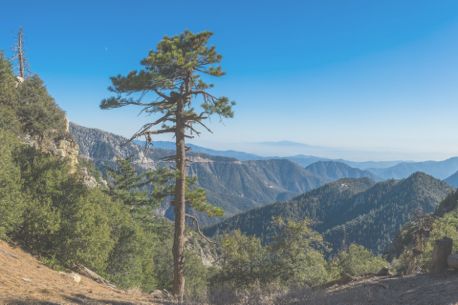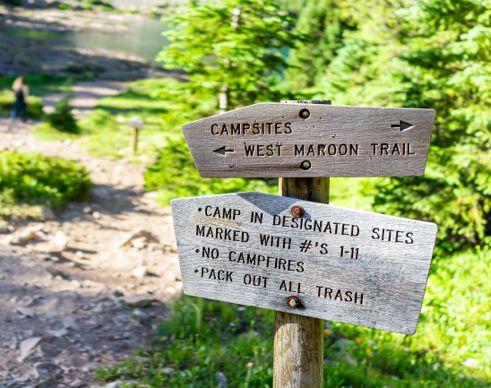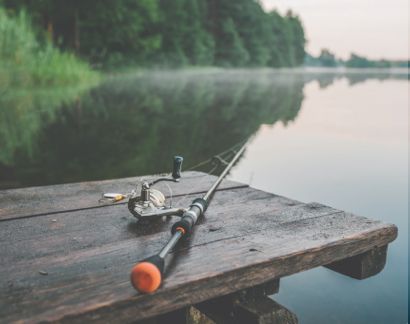Camping in Sequoia National Forest
Sequoia National Forest offers several RV-friendly campgrounds with modern facilities and scenic views. Consider BLM sites for camping near Sequoia National Forest and use platforms like RVshare to locate nearby dump stations for a hassle-free camping experience.
Campgrounds in Sequoia National Forest
Free
$34/night
$34/night
$34/night
Starts from $55/night
Private Campgrounds Near Sequoia National Forest
For added comfort, consider staying at some of the top campgrounds near Sequoia National Forest. These sites often feature additional amenities like Wi-Fi and full hookups, enhancing your RV camping experience.
Campgrounds by Lakes/Rivers for Fishing and Water Activities
$34/night
Starts from $85/night
Free
$12/second vehicle
Budget-friendly Campgrounds
Free
Free
Free
$34/night

Sequoia National Forest Hiking Trails
Explore the diverse hiking trails in Sequoia National Forest, ranging from easy walks to challenging treks.
Easy Hikes for Beginners
Distance: 2.6 miles
Difficulty: Easy
Distance: 1.3 miles
Difficulty: Easy
Distance: 6.7 miles
Difficulty: Easy
Challenging Trails for Hikers
Distance: 15.9 miles
Difficulty: Difficult
Distance: 33.5 miles
Difficulty: Difficult
Distance: 2.9 miles
Difficulty: Moderate
Lakeside Trails
Distance: 2.6 miles
Difficulty: Easy
Distance: 1.6 miles
Difficulty: Easy
Distance: 0.6 miles
Difficulty: Easy

-
Trail of 100 Giants
This accessible trail takes you through Long Meadow Grove that showcases giant sequoias. The largest trees are estimated to be upwards of 1,500 years old. Facilities at the trailhead include restrooms, picnic tables, and a campground. This grove has over 100 giant sequoias with a diameter of 10 feet or more. Another 700 smaller giant sequoias, meaning a diameter of less than 10 feet, fill in the rest of the grove. The largest tree is over 20 feet in diameter and is 220 feet tall. Note that this heavily traveled trail closes from mid-November to mid-May.
Length: 1.3-mile paved loop
Intensity: Easy
-
Unal Interpretive Trail
This wooded trail offers spectacular views of the Sierra Nevada mountains. The trail is open year-round, but you might want snowshoes in the winter. The elevation along the trail only changes about 700 feet, but it starts at over 6,000 feet. If you're not used to walking at elevation, you may want to pace yourself. You'll find a park bench to rest at Unal Peak, which is at 6,838 feet in elevation. The trail has an interactive brochure written from the viewpoint of the Tubatulabal tribe. The brochure is on the signboard at the trailhead.
Length: 3-mile loop
Intensity: Moderate
-
Kern River Trail
This sunny trail winds along the Kern River. It is rated moderate, but it is rather narrow and uneven. It does gain over 1,000 feet in elevation, so if you're not used to a lot of up and down, it may be difficult. This trail is best visited in spring when the wildflowers abound. The trail is open to motorbikes along with hikers, mountain bikers, and horses. With a license, you can fish at many spots along the river.
Length: 8 miles, one-way
Intensity: Moderate to Difficult
-
Pacific Crest Trail (PCT)
The PCT is nearly 3,000 miles long, stretching from the Mexico border all the way into Canada. It was made a National Scenic Trail in 1968. Sequoia National Forest offers many access points to this trail. A popular segment goes from Jawbone Canyon to Piute Mountain Road. The trail is open for hiking and horseback riding. This section passes through Walker Pass Campground, where you can stop for a picnic.
Length: 10.4 miles, one-way
Intensity: Moderate
-
Converse Basin - Boole Tree Trail
Boole Tree is the largest tree in the U.S. National Forest System and the 6th largest of all known sequoias. The Converse Basin Grove was a huge grove until it was logged between 1892 and 1918. The Boole tree was spared because of its tremendous size. Currently, it rises to 269 feet high with a diameter of about 35 feet. It's probably at least 2,000 years old. The Boole Tree Trail heads uphill from the parking area and passes through a mixed forest of lodgepole, western white, Jeffrey, and sugar pines. You'll get breathtaking views of the Kings River gorge and the high Sierra Nevada mountains. Depending on the season, you can traverse this trail by hiking, skiing, or snowshoeing.
Length: 2.5-mile loop
Intensity: Moderate
-
Chicago Stump Trail
This stump attests to an interesting piece of history. The stump was once the General Noble Tree. It was cut down in 1897, and the pieces were transported to the Chicago World's Fair. But when it was reassembled, it was nicknamed the California Hoax because no one believed that a tree could possibly be that big. The trail takes you through Jeffrey pines to a meadow ringed by young sequoias, red firs, and azaleas.
Length: 0.6 miles one-way
Intensity: Easy
-
Indian Basin Trail
This short loop trail takes you through the Indian Basin Grove. Along the way, you'll find many stumps of the once-magnificent sequoia trees that were logged in the early 1900s. Scientists now study these stumps for clues about climate change. You'll also find interpretive signs detailing the history and scenery of the area. Springtime is perhaps the best time to visit due to the abundance of wildflowers.
Length: Easy
Intensity: 1.4-mile loop
Activities in Sequoia National Forest
Here are some of the interesting things to do in Sequoia National Forest:
Enjoy hundreds of trails and roads. Bicycles are allowed on all Forest Service trails in Sequoia National Forest except in designated Wilderness areas and on the Pacific Crest Trail.
Climbing areas in Sequoia National Forest include the Needles and Domeland Wilderness, particularly Church Dome. With over 1 million acres, the forest holds many hidden granite routes to explore.
Sequoia National Forest’s rivers, particularly during spring snowmelt, offer anglers excellent fishing opportunities. For calmer waters, try Lake Isabella or Hume Lake, with Lake Isabella featuring marinas and boat launches.
Sequoia National Forest offers incredible nature viewing. Highlights include the Trail of 100 Giants, Dome Rock, and the Kern River. Wildlife spotting opportunities abound with diverse ecosystems to explore throughout the year.
Bring your picnic to developed areas in Sequoia National Forest, featuring tables, grills, and vault toilets. Most are first come, and some require packing out your trash.

-
General Sherman

The trees are the obvious draw for this famous area of California. General Sherman is probably the most photographed tree. It is the largest tree, by volume, in the world. In addition to the Boole tree, the General Grant is also impressive at 34.2 feet in diameter.
-
Nature and Bird Watching

The forest hosts 72 species of mammals, including black bears, 26 rodent species, 17 bat species, and Sierra Nevada bighorn sheep. It's also a birder's paradise with over 200 different bird species. Seasonal hunting is also allowed.
-
Hiking

For those seeking educational exercise, Sequoia National Forest has over a dozen interpretive trails.
-
Fishing

Lake, pond, river, and stream fishing are available at dozens of sites throughout the forest.
-
Climbing & Geocaching

Rock climbing is also popular at spots like Moro Rock, which has a 1,000-foot face, or Angel Wings with a 2,000-foot wall. Climbing skills may come in handy for some geocaching spots, but you'll find plenty of other geocaches that don't require as much effort.
-
Stargazing

In addition to having many great spots for stargazing, Sequoia National Park hosts a number of astronomy programs.
How to get to Sequoia National Forest
Address: 32588 Hwy 190, Springville, CA 93265
Fee: Entry fee $0
By Car
From Fresno, California: Drive approximately 1.5 hours along Highway 180 or Highway 198, both providing access to Sequoia National Forest's entry points.
From Bakersfield, California: About 2 hours away, take Highway 99 and connect to Highway 65 or 155 for access to southern areas of the forest.
By Air
Fresno Yosemite International Airport (FAT): The closest airport, approximately 50 miles from the forest.
Bakersfield Meadows Field Airport (BFL): Located about 100 miles away, this airport offers regional flight options.
Seasonal Restrictions
Seasonal restrictions in Sequoia National Forest are implemented for safety, particularly during winter and fire season. Trails, campgrounds, and other facilities may close due to weather conditions or hazards. Always verify current accessibility and regulations before planning your visit to ensure a safe experience.
Fees in Sequoia National Forest
Sequoia National Forest does not have a general entry fee. However, some campgrounds and recreation areas may charge fees, such as $22 for overnight stays in developed campgrounds. Specific activities like guided tours, horse camping, and permits for other services may also incur additional fees.
Frequently Asked Questions About Sequoia National Forest
Is there a fee to get into Sequoia National Forest?
No, there is not a fee to get into Sequoia National Forest. However, Sequoia National Park does have a $35 per vehicle entrance fee. There may also be fees and permits required for various recreational activities in the forest.
Is there a limit to how long you can camp in Sequoia National Forest?
Yes, there is a limit to how long you can camp in Sequoia National Forest. The maximum stay at most campgrounds and for dispersed camping is 14 days in one spot, with a 30-day maximum stay per ranger district per calendar year.
Is Sequoia National Forest open all year round?
Yes, Sequoia National Forest is open year-round. In summer, there is hiking, mountain biking, fishing, swimming, and other warm-weather activities. In winter, visitors can snowshoe, cross-country ski, and enjoy cold snowy weather.
What is the best time to visit Sequoia National Forest?
The best time to visit Sequoia National Forest is from June through August. The weather is warm, making it a great time to hike, mountain bike, horseback ride, and more. If you visit the forest in winter, there will be snow. It's a fun time to be in the forest, but you will need snow tires or chains.
What type of wildlife lives in Sequoia National Forest?
Wildlife in Sequoia National Forest includes gray foxes, bobcats, skunks, black bears, woodrats, California quail, acorn woodpeckers, and California newts. The forest is also home to a variety of birds, reptiles, and other small animals.








